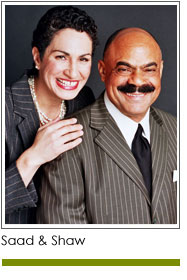 Let’s talk about data: the exciting information hidden within your nonprofit’s donor database. There’s much to be learned by running reports, and many reports to run. The most in-demand: funds raised to date. But what about less popular reports and the secrets they can reveal? What about your “top-tier small donors?”
Let’s talk about data: the exciting information hidden within your nonprofit’s donor database. There’s much to be learned by running reports, and many reports to run. The most in-demand: funds raised to date. But what about less popular reports and the secrets they can reveal? What about your “top-tier small donors?”
Use your summer months to produce and study reports showing donors who have given in each of the past three or five years. Look for those who consistently give at the highest levels of your “small donor” category. Those included in this group will vary from nonprofit to nonprofit. For a college, this group may be those who give $1,000 each year. For a national nonprofit, the group may be $500 annual donors. For a grassroots organization, it may be those who give $100 annually. The most important thing is to know who falls into this group – let’s call them “top-tier small donors” – at your nonprofit.
Take the time to create and implement a strategy for reaching out to these donors and growing their collective impact. They are the backbone of individual giving programs: a segment of your donors who can be cultivated for larger gifts, to serve as ambassadors, or to encourage others to give. They need to be tended to and summer is a perfect time to reach out.
Craft a personalized outreach program where someone from your organization or institution calls these donors to thank them for giving over the years. Create a script that includes a request that the donor consider a slightly increased amount when she makes her next gift. Determine who within your nonprofit would be ideal at making such calls. Set up a short training program and get into action.
When reviewing your list of “top-tier small donors” look for who you know and who you don’t. Invite a mix of these donors to a small reception, especially those who have not been invited to visit with your nonprofit before. Better yet, consider scheduling a personal visit to their home or office.
When reviewing lists of lapsed “top-tier small donors” consider a call or email to reengage each. Thank him for his prior support, share a few updates on your impact, and ask for his consideration when he makes his future giving decisions. No hard sell. A simple call from someone who works for, volunteers at, or benefits from your nonprofit.
If you believe specific donors will respond better to an email than a phone call consider a “real” email – short and personal; not an “e-blast.”
We offer these suggestions as a way to retain and grow current donors who may be able to make a larger impact: as a way to get to know them. Pick up the phone, say hello. Don’t take your donors for granted – show them you care.
Copyright 2013 – Mel and Pearl Shaw
Mel and Pearl Shaw are the authors of “Prerequisites for Fundraising Success.” They position nonprofits for fundraising success. Visit them at www.saadandshaw.com.











